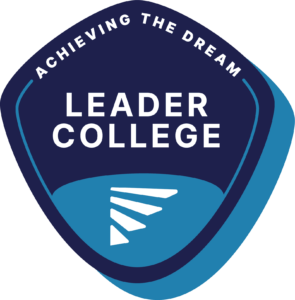CONTACT OR VISIT US
Jack Barden Center
(2nd Level)
Financial Aid FAQ
It is very common for students and parents to have questions about financial aid. Expand the questions below to find common answers to many of our most asked questions.
Applying for Financial Aid
What is the FAFSA?
To apply for federal student aid, such as federal grants and work-study, you need to complete the Free Application for Federal Student Aid (FAFSA).
Completing and submitting the FAFSA is free and easier than ever, and it gives you access to the largest source of financial aid to pay for college.
All UTTC students are required to submit a FAFSA each school year.
Do I have to apply for financial aid every year?
Yes! You must reapply for financial aid each year by completing the Renewal Application for Federal Student Aid (if you receive one from the federal processor) or by completing the next year’s Free Application for Federal Student Aid (FAFSA online).
Do I need to be admitted before I can apply for financial aid?
No. You can apply for financial aid any time after October 1st for the following school year. To receive awards, you must be admitted and enrolled at United Tribes Technical College.
What is the Expected Family Contribution (EFC)?
The EFC is calculated from the information you entered on the FAFSA.
The EFC is calculated according to a formula established by law. Your family’s taxed and untaxed income, assets, and benefits (such as unemployment or Social Security) all could be considered in the formula. Also considered are your family size and the number of family members who will attend college or career school during the year. The EFC Formula guide shows exactly how an EFC is calculated.
Your EFC is not the amount of money your family will have to pay for college, nor is it the amount of federal student aid you will receive. It is a number used to calculate how much financial aid you are eligible to receive.
What is the IRS Data Retrieval Tool?
The IRS Data Retrieval Tool allows students and parents to access the IRS tax return information needed to complete the Free Application for Federal Student Aid (FAFSA), and transfer the data directly into their FAFSA from the IRS Web site.
To use the IRS DRT, you will enter your address for the tax year exactly as it appears on the tax return. Your filing status and name must also match the information that is on the tax return.
If you are selected for Verification and you have used the IRS DRT, you will not need to provide copies of your tax information to us. This is because the DRT transfers income and tax information directly from the IRS, so we will not have to verify income information.
What happens after I complete the FAFSA?
Your application is processed by the Department of Education and then sent to United Tribes Technical College so that eligibility can be determined.
When United Tribes receives your FAFSA, we will contact you via the email you provided on your FAFSA. You will either receive a Financial Aid Offer (that means your FAFSA is complete) or a Missing Items email. If you submitted an incomplete FAFSA, or were selected for Verification, you will recevie a Missing Items email with further instructions.
Please watch this short video for an overview of the process.
What is a Financial Aid Offer letter?
You will receive a Financial Aid Offer letter from UTTC when your FAFSA has processed successfully. The letter indicates what types of funding and how much funding you are eligible to receive with your FAFSA. Generally, the first offer letter you receive will indicate your Pell Grant eligibility and Work-Study (if applicable). Scholarships and other grants you receive will be shown on the Offer Letter.
You can request an updated Offer Letter (aka Award Letter) at any time throughout the semester by visiting the Financial Aid Office.
What is Verification?
Verification is a way to double check your FAFSA information to make sure everything is accurate. You will need to submit additional documentation to the Financial Aid Office to complete verification.
UTTC does not determine who is selected for verificaiton. The Department of Education randomly selects about 30% of all FAFSA submissions for verification. You may also be selected if your information changed, or if they believe there is an error in the reported data. The Financial Aid Office is then responsible for collecting the additional information before any financial aid awards can be processed.
Do I need to submit copies of my family’s federal tax returns to the financial aid office?
We will request copies of all required documents through the email you provided on your FAFSA submission, after your FAFSA is initially reviewed. Do not submit any documents to our office unless we have specifically requested you do so.
Which parent fills out the FAFSA is my parents are divorced or separated?
The parent you lived with more during the past 12 months. If you did not live with either parent or if you lived with each parent an equal amount of time, provide information for the parent who provided the most financial support to you during the last 12 months or during the most recent calendar year that you actually received support from a parent.
If this parent is remarried as of the date you are filing the FAFSA, provide information on the FAFSA about that parent and the person whom that parent married (your stepparent).
FSA Login
I forgot my login, can I create a new account?
No. Your FSA account is linked to your social security number. If you have ever signed in before, you will need to log in to the account that you have already created.
How do I reset my login?
Your usename will be displayed on the screen after you verify your identity.
You can be sent a secure password reset link by verifying your identity.
Verify your identity by sending a secure code to your email or phone, if you have verified your email/phone number in the past. You can also answer your security questions to verify your identity.
*NOTE* If you retrieve your username AND reset your password, you will need to wait 30 minutes before logging in to your account.
What if I can‘t remember my questions, and I don’t have a verified phone or email?
You will need to call the Student Aid help line. After you are connected, you will select “FSA Login Help” as a menu option. This will connect you with a real person who can help verify your identity and work to get into your account.
Call 1-800-4-FED-AID (1-800-433-3243) to speak to someone on the Federal Student Aid help line.
Dependency Status (Dependent vs. Independent)
How do I know if I am independent or dependent?
When you fill out the FAFSA, you will be asked a series of questions to help determine your dependency status. If you answer ‘yes’ to any of the dependency questions, you will be asked to provide documentation to the Financial Aid Office.
My parents do not claim me on their taxes, and do not help me with school. Can I change my status to "independent"?
Dependency for financial aid purposes is defined to include all students who are undergraduates and who are under the age of 24, not married, not supporting dependents of their own, not veterans, not orphans or wards of the court, not an emancipated minor or in legal guardianship, not homeless and not in foster care since turning 13 years old.
Even if your parents choose not to help you with school, their income and assets are used to determine how much they could pay, and financial aid eligibility is based upon this information. Exceptions to this policy do exist. Consult with a financial aid advisor for help in documenting your situation.
What if my family circumstances change after I apply?
If your situation changes after completing the FAFSA because of unusual circumstances, contact the Financial Aid Office.
Disbursements and Refunds
How is my financial aid calculated?
Your eligibility depends on your Expected Family Contribution (EFC), your year in school, school enrollment status, and the school’s Cost of Attendance (COA).
There is a formula for calculating Financial Need. The formula looks like this:
Financial Need = COA – EFC
What is the difference between a Financial Aid disbursement and a refund?
Disbursement is the process of transferring the anticipated aid for each semester to a student’s account. This process occurs in the Financial Aid Office. The Student Accounts Office uses those funds to pay outstanding tuition, fees, and book advance charges.
A refund is the credit balance that is generated after all allowable institutional charges are deducted from your disbursement. The Student Accounts Office releases those funds to students in the form of a refund check.
How do I receive a refund from my financial aid funds?
If you have a balance remaining after your college charges have been paid, a check will be issued from the Student Accounts Office. You can pick up refund checks from Student Accounts.
How do I check my Student Account balance?
You can view your account balance under Student Information – Student Accounts on my.uttc.edu. If you have a negative balance, you will have a refund check issued to you.
What is the Pell Lifetime Limit?
Your Pell lifetime eligibility maximum is 600% over the course of your lifetime. That’s equal to a 100% Pell Grant each year for six years. So, your Pell lifetime eligibility is limited by how long you’re enrolled, not how much you receive.
That means if you drop out and return later, you still may be eligible to receive Pell funding. You will not be eligible to receive Pell funding if you have exceeded the 6 year (or 12 semester) limit.
You can check your Pell Lifetime Eligibility Used on the National Student Loan Database System. If you see a 200% LEU, that means you received Pell for 2 years (or 4 semesters).
Send Us a Message Anytime!

Bismarck, ND 58504
Phone: 701.255.3285
Toll Free: 888.643.8882
Equal Opportunity Provider



